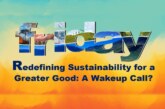
Dr. Arvind Kumar*
Let’s be absolutely clear, no one actually killed the Yamuna. There’s no single villain to blame. It’s not like it was a carefully orchestrated murder mystery. It simply runs crystal clear…right into a polluted mess. So, it’s nobody’s fault, really. Definitely not a political issue – heaven forbid! It’s just a river doing its thing, while we, with the purest of intentions, of course, stand by and watch it gasp for breath. It’s about the undeniable reality of our rivers struggling, a tragedy unfolding in plain sight, conveniently masked by our collective, well-meaning indifference.
Isn’t it astonishing that while politicians are busy with their election campaigns, Delhi is quite literally gasping for breath? The Yamuna River is ranked among the world’s most polluted waterways. Climate change only adds insult to injury, exacerbating these challenges. The state of our capital city reads like an environmental horror story – but where are the urgent debates about the Yamuna becoming essentially an open sewer, or about why our children have to wear masks just to play outside? Why aren’t we seeing concrete action plans instead of the usual election rhetoric? One party is proposing a monthly aid of Rs 2,500 for women while other is pledging Rs 2,100 per month to women, continuing their strategy of offering direct benefits to secure electoral support. As voters, shouldn’t we be demanding to know how candidates plan to clean up our river, what their timeline is for improving air quality, and how they’ll protect our remaining green spaces? The real question is – with elections around the corner, isn’t it time we made these environmental issues a deciding factor in who gets our vote? After all, this isn’t just about statistics and reports – it’s about our daily lives, our health, and our children’s future in this city.
Pollution and Governance Deadlock
Delhi’s in a serious environmental pickle, with air you can practically taste, a river that’s more sludge than water, and shrinking green spaces. As of January, 2025, the air quality was officially “poor” at 357, but some spots were even worse, hitting “severe” levels above 400. This nasty air is mostly from cars, factories, and construction dust. The Yamuna River is also in terrible shape, with over 80% of its Delhi stretch severely polluted by sewage and industrial waste. On top of that, Delhi’s lost about 20% of its forests in the last ten years because of urban sprawl. This all adds up to a major health risk for everyone living there. And, of course, there’s the political back-and-forth: Prime Minister Modi recently called out the Delhi government for not doing enough, asking if they’d only clean the Yamuna if it won them votes. Delhi’s Environment Minister fired back, suggesting artificial rain to clear the smog and blaming the central government for holding things up. It seems like everyone’s pointing fingers instead of actually fixing the problem.
Delhi’s Environmental Emergency
Delhi’s environmental woes are hitting hard on three fronts: a desperately polluted river, dangerously toxic air, and rapidly disappearing green spaces. It’s a crisis that demands urgent attention.
The Yamuna’s a Mess: Imagine a river so polluted that it’s 28 times more toxic than what’s considered safe. Recent data from the Delhi Pollution Control Committee (DPCC) shows that the biochemical oxygen demand (BOD) levels at Asgarpur, where the river exits Delhi, reached a staggering 85 mg/l, which is 28 times higher than the permissible limit of 3 mg/l and significantly worse than the 2 mg/l recorded at Palla, where the river enters Delhi. This drastic increase highlights the severe impact of untreated sewage and industrial effluents, with approximately 80% of the river’s pollution load attributed to municipal sewage and with many sewage treatment plants (STPs) operating below capacity—only 32% utilization among industrial clusters has pushed pollution levels way beyond safe limits.
Air You Can Cut With a Knife: Air quality in Delhi remains critically poor, exacerbated by vehicular emissions, construction dust, and industrial discharges. On January 9, 2025, the AQI was recorded at 357, categorizing it as ‘poor,’ with certain areas exceeding 400, indicating ‘severe’ pollution. data from Indian Agricultural Research Institute and reports submitted to Supreme Court confirmed that stubble burning in Punjab and dust from poorly maintained roads in Delhi were the major contributors to air pollution in north India, particularly DELHI. The World Air Quality Report, prepared by IQAir, said Delhi was the most polluted capital city in the world in 2024 — its air quality had worsened last year when compared to 2023. Delhi has lost roughly 20% of its forest cover in the last ten years due to rapid urbanization, illegal construction, and poor city planning. Its current 20% green cover translates to just 10.41 square meters of green space per person, falling short of the UN’s 9 square meter recommendation for sustainable cities. Adding to the problem, Delhi’s waste management is inadequate, with only 60% of the 10,000 metric tons of daily waste being processed, leading to littered parks and neglected green spaces.
Vanishing Green Lungs:Delhi has lost roughly 20% of its forest cover in the last ten years due to rapid urbanization, illegal construction, and poor city planning. Its current 20% green cover translates to just 10.41 square meters of green space per person, falling short of the UN’s 9 square meter recommendation for sustainable cities. Adding to the problem, Delhi’s waste management is inadequate, with only 60% of the 10,000 metric tons of daily waste being processed, leading to littered parks and neglected green spaces.
Connecting The Dots
Delhi’s environmental management is complicated by overlapping responsibilities between the Delhi government (through agencies like the DJB and Pollution Control Committee) and the central government (via the Environment Ministry and CPCB). Despite strong environmental laws like the 1986 Environment Protection Act and the 1974 Water Act, enforcement is weak.
Delhi’s throwing a lot at its environmental problems, especially the terrible air. There’s the National Clean Air Programme (NCAP) aiming for big pollution cuts by 2026, but it’s been criticized for not working well with state governments. Other efforts include the Graded Response Action Plan (GRAP) for tackling pollution spikes, smog towers, and using bio-decomposers to deal with crop burning. On the Yamuna front, despite big investments like the Yamuna Action Plan (which hasn’t been very effective) and the Namami Gange Programme (which is behind schedule), Delhi has a new six-point plan to clean the river by 2025 by upgrading sewage treatment and expanding sewage networks. Delhi’s also trying to boost its green spaces with initiatives like the “Delhi-City of Lakes” and the Green Action Plan.
But here’s the catch: even with all these efforts, Delhi’s still struggling.
Some “green” initiatives, like waste-to-energy plants, have even made air quality worse. There’s also a lack of coordination with neighbouring states, slow implementation due to bureaucracy, inconsistent public compliance, and the constant pressure to prioritize economic development over the environment. Plus, the city’s infrastructure is struggling to handle waste and provide decent public transport. So, while there’s no shortage of plans and projects, Delhi still has a long way to go to truly clean up its act.
Will Votes Follow the Wind?
The current legislative framework, including the Environment Protection Act and Water Act, while comprehensive on paper, requires robust enforcement mechanisms backed by enhanced monitoring capabilities and stringent penalties for violations. The implementation of cutting-edge technologies, such as Narrow Band-IoT sensor networks and Wind Augmentation and Air Purifying Units (WAYU), offers promising solutions for real-time pollution monitoring and mitigation. The deployment of such innovations, coupled with artificial intelligence and drone technology through initiatives like the Commission for Air Quality Management (CAQM), can revolutionize environmental surveillance and enable prompt interventions.
Way Ahead
Addressing Delhi’s environmental revival demands an integrated ecosystem-based approach that weaves together forest conservation, wetland restoration, and Yamuna rejuvenation. By creating a network of urban forests using the Miyawaki technique and developing green corridors through Bioswales and Rain Gardens we can establish natural air purification zones throughout the city. This needs to work in harmony with the restoration of Delhi’s historical wetlands and creation of new ones, acting as natural water filters and biodiversity hotspots. The Yamuna’s restoration is crucial, combining riverfront development with ecological principles – think biodiversity parks along the banks and constructed wetlands at drain outfalls.
The key is bringing together multiple stakeholders on fostering meaningful collaboration from neighbourhood committees to corporate partners – while ensuring cross-sectoral coordination between urban planning, public health, and conservation efforts. As Delhi stands at this critical environmental juncture, the way forward lies not in electoral promises but in implementing these actionable solutions through a coordinated, technology-driven approach backed by regular monitoring and adaptive management strategies that prioritizes environmental restoration while ensuring accountability across all stakeholders. This isn’t just environmental conservation; it’s about creating a living, breathing ecosystem that supports Delhi’s future.
*Editor, Focus Global Reporter





